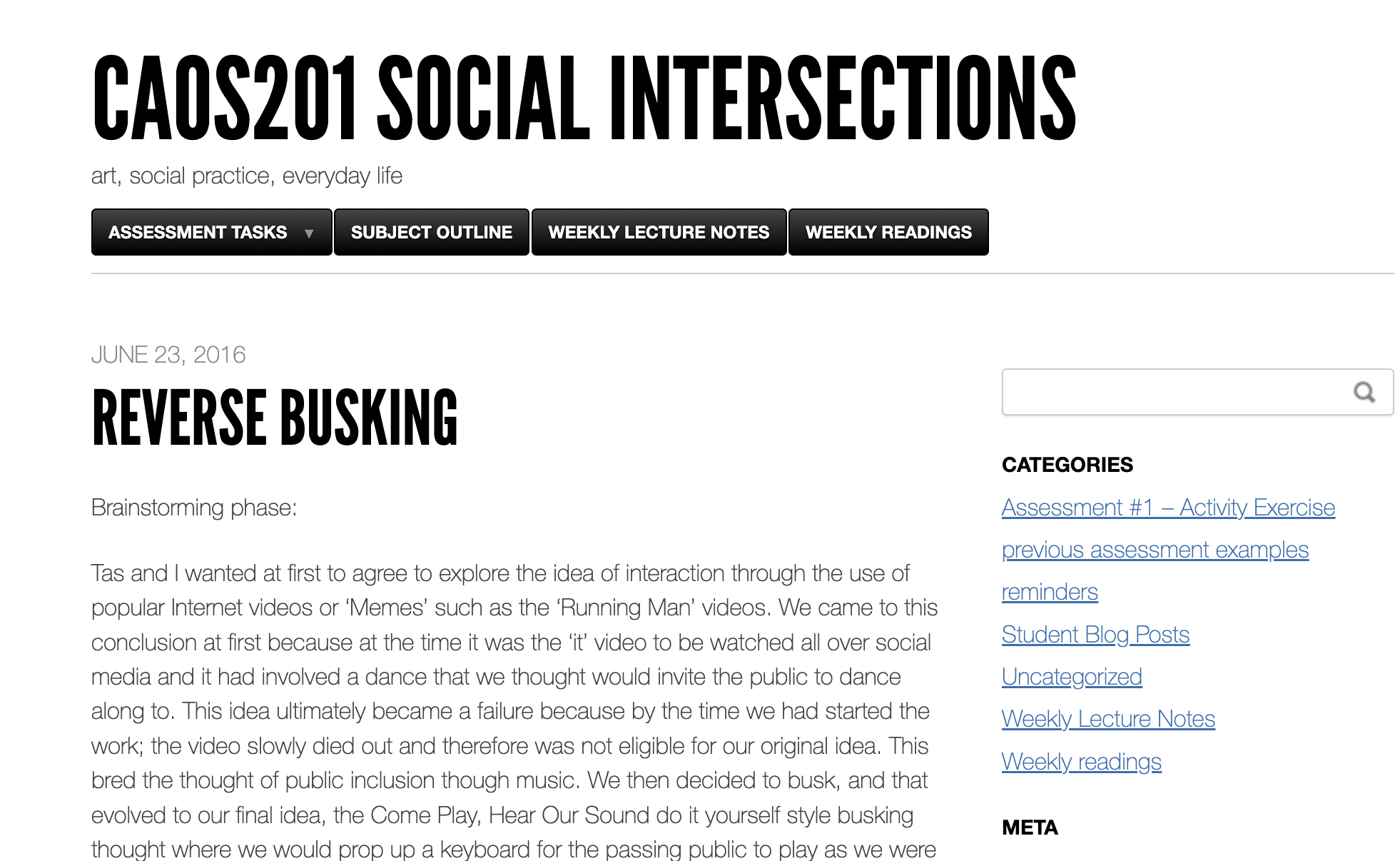If in doubt, return to blogging! Since the question posed in the title of this blog entry is unfathomable to me, and I am struggling to sort it out in my academic word documents, here I am, back online, where things don’t have to be “right”, just interesting…
Unfortunately, I fear that this question shouldn’t be unfathomable to me, by this stage. I am due to hand in my thesis on 12 June, my scholarship has run out, I’ve been on this boat for over 3 years now… I should, by rights, know WTF “art practice as research” means!
But I don’t.
I’ve always thought of art as a sort of whimsy. It’s something silly to pursue that makes people realise how silly the whole world is, so we might as well relax and not all take ourselves too seriously.
And then, fool that I am, I go and enrol in a PhD programme which proposes that art practice is not only a very serious business, it is a form of RESEARCH that stands up as an equivalent to the research produced by, say, my ole buddy Chris-o, the pharmacologist, who has done an intensive study of withdrawal symptoms of methamphetamine addicts. He will hand his thesis in about the same time as me. Mine will be about blogging as a form of art. Assuming all goes well, we will both end up with PhD degrees. How the hell can they be equivalent?
One of the frustrating things about the job my university requires of me, is that I have to submit an academic research paper. My argument (as best I can muster it) is about how blogging allows knowledge to emerge in a fragmentary, collaborative way. It’s about allowing us to see the process of doing stuff, experiencing life, and turning it over through dialogue, as a thing that is constantly emerging – not a tidy finished product.
And yet, what is the written thesis supposed to be? A watertight product with complete footnotes and all contingencies taken care of. Talk about square peg in round hole, eh?
In various chats with friends who are also trying to shoehorn their unwieldy creative projects into the format for “submission” (think about the meaning underlying that word!), I have mused on other possibilities. How great would it be, I have asked myself, if I could hand in my PhD as a series of blog entries? That way, I could merge means and ends. Method and product would utilise the same system – the thing would actually DO what it said, not just be a way of drily saying something about a process that happens somewhere else.
Here’s how it would work. Each blog entry would have to be relatively concise. Each would pose a question, or state some observations, related to the practice of blogging-as-art (the two projects presented as part of this thesis are Bilateral Kellerberrin and Bilateral Petersham). Just like an academic paper, the entries would refer also to other thinkers and artists, considering ways that others have done this stuff, and suggesting the possible benefits of doing and thinking in the way I have carried out.
But, unlike an academic paper, these entries would then be open to enquiry, suggestion and response from others (and from myself) through the comments form at the end of each blog entry. This would be a strictly ADDITIVE process. Unlike academic writing, blogging creates a sort of knowledge through querying what has been already written, and then responding to the queries, as a dialogical process. (OK, so academic writing does that too, but it’s an interminably long-winded way of doing things, publishing in refereed journals then responding in kind, takes years…).
My point is, the whole process of dialogical exchange (and knowledge production) is laid bare in the blogging format. Furthermore, these blog entries (ie “thesis chapters”) would be published one by one, as they are written. There would thus be the chance that comments and dialogue generated by an early blog entry could affect what happens in the ensuing chapters. The whole process would be emergent – and visibly so – as opposed to the standard academic model of hiding away in the study, burning the midnight oil to get this essay perfect BEFORE making it public. If the academics really required it, I could do a summing-up entry which ran through what I thought I had learned from the process.
All of which is to say, I would like to perform upon academia the same opening-out as I like to perform on the art world. In my way of doing things, art is shown to be a set of emergent processes rather than a magical product that seems to come from some mysterious other planet. Bilateral Kellerberrin and Bilateral Petersham are clear examples of this emergent-process-as-art, where interactions between me and local residents who I bump into, written up on the blog, then lead to further interactions and suggestions for future adventures. My recent goat project Gruffling is this whole method in a nutshell.
Would / could my university accept such a thesis?
